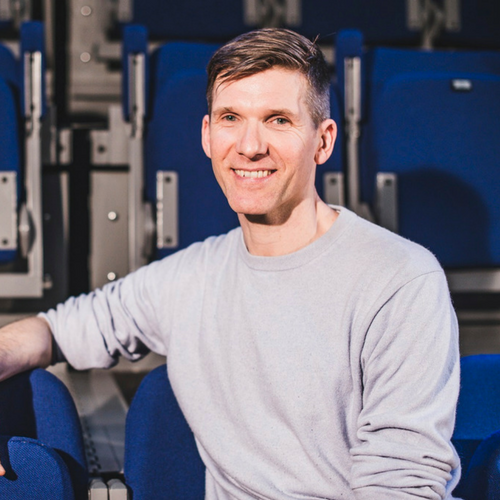Dance is personal. It is your muscles, your injuries, your sweat, your discipline, and your imagination. Professional dance is not just technique, physical ability, and rhythmic sense; it is the dancer’s personality, which is in their bodies and in their minds. What emerges from talking to dancers and choreographers is the personal work of dance. Dancers do not simply replicate established movements for the audience, they bring their individuality to a piece in how their body moves and how they give an interpretation of their role, sometimes that includes creating their own movements.
Contemporary dance is often an exploration of movement and physicality that begins with an awareness of one’s body. Dancers learn about their body, how their body is in space, the different places where the body can be, the learned and habitual moves, and how to become aware of how they move. Dance is born of physical and mental awareness. It rests on deep knowledge of one’s body in space and in movement, and making decisions on how to move.

I watch dancers and see how different they are. They have different builds, different ways of moving, but, above all, different personalities that become prominent when they dance. Aisha Naamani, one of the dancers of the National Dance Company Wales (NDCW), tells me, ‘Everybody has a different quality in movement because everybody has a different way of processing information.’ NDCW dancers do a lot of ‘rep work,’ work of different choreographers coming for a short time for a production. That means dancers need to take on different outfits rather than develop their own work. However, for Roots, each piece relied on improvisation and collaboration between choreographers and dancers.
Naamani, referring to Ed Myhill’s piece Why Are People Clapping?, part of Roots, tells me,
‘We had to create our own movement, we have to do that as naturally and thoughtfully but also not attached to it, not tied down to what you want to do. … You have your individuality doing what your body would do, but then Ed would come and see it and rearrange the puzzle somewhere. But you always keep that essence of your own individuality because that’s where you create it from.’

The interplay between the individual dancer and the group is evident in the piece itself. During the rehearsals, Myhill tells the dancers that it’s about
‘Appreciating individuals and what they bring to the circle. The rhythm is set up by your colleagues, your friends. They are there to support you, use it as a drive to express yourself.’

As the dancers become familiar with one another and how others move, they are able to support one another. Fearghus Ó Conchúir, the Artistic Director of NDCW, realised that the coming together as a team and mutual support in rugby are familiar to dancers. In his piece Rygbi, the way in which dancers relate to one another is most evident in improvisation. He tells me,
‘You don’t need to offer support if it’s all decided already. You just need to be in your place. Active support comes from not knowing what is going to happen and being ready for whatever it is and we built that kind of improvisation into the work. We continue to work with improvisation to keep the work alive.’
Ó Conchúir explains that he has questions in mind and gives structure to the piece, but that
‘The dancers are the ones who inhabit it and take an idea, for me the reason to collaborate is because I’m not someone who decides what the work is in my head in advance and then want to see it just played out in front of me. … I want to be surprised by the process, otherwise it’s not enriching. I don’t learn anything. The reason to be engaged in this artistic practice is to keep learning things.’
Yet, this work of improvisation rests on dancers offering something that comes from their own self, their own body, something that at times can be very personal, and is not always accepted. Naamani tells me that that can be hard,
‘Because you can offer something to a choreographer, it’s almost as if you put your heart out to them and you’re being really vulnerable, but it’s not a personal thing, it’s what is necessary at that time. That’s a really hard thing. It’s long hours, it’s busy, constant re-evaluating what you’re doing, constant thoughts. You have to be very strong so you get very strong but you also, you have to be vulnerable at the same time, it’s a hard balance.’
Ó Conchúir is well aware of the personal gift that dancers give to a choreographer. He says,
‘Sometimes you’ll say ‘ok, no’, sometimes when someone offers a thing, you’ll ‘oh no, thank you for offering that, that is a possibility, but that’s made it clear to me that we need to stay over here or sometimes you’re like ‘oh, you’re right, let’s go off on that route’. Even when you’re not, because you can’t necessarily follow everything that’s offered, then that helps clarify what you’re choosing to do. For me that collaboration with the dancers is essential and then hopefully that makes it a more interesting and engaging process for them, because they’re helping the creation and give it life. For me that’s the most important thing, that the dancers are engaged. In the moment of performance is them, they’re performing it with the audience. What I’m trying to do is to help prepare everyone for that encounter.’
Dance entails being vulnerable and giving themselves to others. Those others are your colleagues, the choreographer, and the audience. Talented dancers and those who gain notoriety might be led astray by their ego, but the soul of dance lies in humility and devotion.
NDCWales latest production Roots is currently touring. Further information and tickets can be purchased here.
